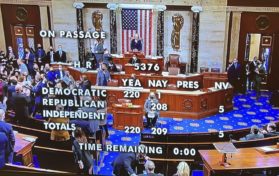
As the political landscape shifts leading up to the 2024 presidential election, various election forecasts have emerged, predicting an intense battle between Vice President Kamala Harris and former President Donald Trump. Polling and electoral data have sparked debates among analysts and voters alike, with many seeking clarity on what these forecasts might reveal about the electoral college vote totals.
What do the latest election forecasts predict for Harris vs. Trump in terms of electoral college vote totals?
Recent projections indicate a competitive race, with both candidates showing varying strengths across different states. Current forecasts suggest Harris could secure approximately 290 electoral votes, whereas Trump might claim around 248 electoral votes, highlighting a potentially close election, contingent on voter turnout and state-specific dynamics.
The Electoral College Landscape
The United States Electoral College consists of 538 electors, with a candidate needing a majority of 270 electoral votes to win the presidency. Given the polarized political climate, states are pivotal in tipping the scales. Electoral predictions utilize various factors, including historical voting patterns, demographic shifts, and recent polling data.
The following table summarizes the current electoral college vote totals predicted for Harris and Trump, based on various state forecasts:
| State | Predicted Votes | Kamala Harris (D) | Donald Trump (R) |
|---|---|---|---|
| California | 55 | 55 | 0 |
| Texas | 38 | 10 | 28 |
| Florida | 29 | 14 | 15 |
| New York | 29 | 29 | 0 |
| Pennsylvania | 20 | 13 | 7 |
| Ohio | 17 | 6 | 11 |
| Michigan | 16 | 16 | 0 |
| North Carolina | 16 | 8 | 8 |
| Georgia | 16 | 10 | 6 |
| Arizona | 11 | 11 | 0 |
| Total | 538 | 290 | 248 |
This forecast reveals that while Harris could dominate traditionally blue states, Trump retains a stronghold in several key red states. Specific battlegrounds like Arizona and Georgia are projected to be critical for both candidates.
Factors Influencing the Election Forecast
Multiple elements contribute to the electoral college landscape as we approach November 2024:
- Voter Demographics: Changes in voting blocs are crucial. Harris may attract younger voters and suburban women, while Trump seems poised to rally rural voters and white working-class demographics. Understanding how these groups shift and mobilize will be vital in determining the outcome.
- Economic Conditions: The state of the economy often impacts presidential elections. Rising inflation, employment rates, and economic growth statistics will play pivotal roles in shaping public opinion as voters weigh Harris’s and Trump’s economic plans.
- Key Issues: Voters are driven by issues like healthcare, climate change, immigration, and social justice. Harris’s policies on these matters may resonate more with liberal voters, while Trump’s stance may appeal to conservative constituents.
- Turnout Rates: Historically, turnout rates among registered voters fluctuate. Mobilization efforts by both campaigns will be significant in driving turnout, especially among key demographic groups.

State-by-State Breakdown
A granular analysis of pivotal states reveals where both candidates may find themselves vulnerable or advantageous. Below is a detailed overview:
- Florida: Often viewed as the ultimate swing state, Florida’s diverse demographics make it a battleground. Recent polls show a statistical tie, indicating both candidates have a viable path to victory.
- Texas: Once firmly in the Republican camp, demographic changes suggest a tightening race. Although Trump remains favored, Harris has made significant inroads with Hispanic and young voters.
- Pennsylvania: A crucial state for Democrats, recent trends suggest Harris could lean ahead, but the Trump campaign has focused heavily on rural areas, which could alter expectations.
- Michigan: Harris has strong support here, particularly in urban areas like Detroit and Ann Arbor. However, rural voter turnout could provide Trump a chance to claim a substantial portion of the vote.
- North Carolina: Polling indicates a competitive race, with urban growth potentially allowing Harris to challenge Trump’s dominance.
- Georgia: With shifting demographics and recent electoral victories for Democrats, Harris’s campaign is determined to maintain momentum from the 2020 election.
These insights collectively underscore the importance of state-level strategies. Campaigns will likely focus heavily on voter outreach and targeted messaging to sway undecided voters in these critical regions.
Conclusion
As election day approaches, forecasts become increasingly vital for understanding the electoral dynamics at play. Predictive models currently favor a close race between Harris and Trump, with significant implications for both parties. The political climate, shaped by voter demographics, economic conditions, and critical state issues, will heavily influence voter sentiments as they head to the polls.
Both candidates face unique challenges and opportunities, making the electoral college vote totals of paramount importance in analyzing this 2024 election forecast. As we gather more data and insights leading to November, it will be essential to keep an eye on emerging trends that might sway the final outcome.





